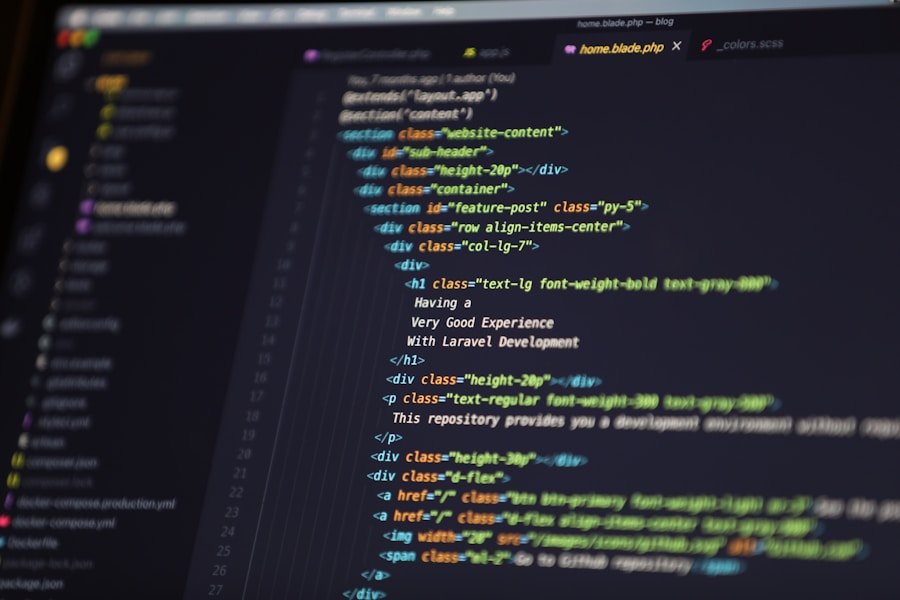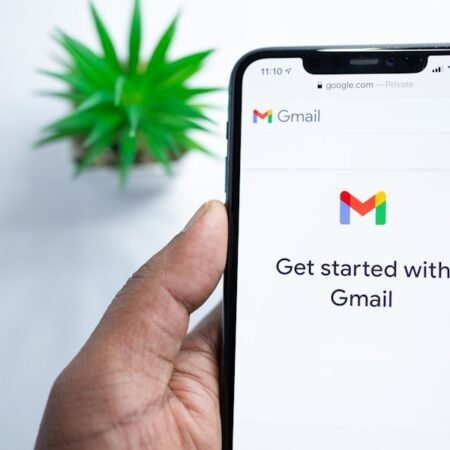Social media has become an essential aspect of modern life, enabling users to connect with others, share experiences, and stay informed about current events. However, the increasing reliance on social media has also led to a heightened risk of identity theft. Identity theft occurs when an individual’s personal information is stolen and used without their consent, often for financial gain.
Social media platforms are a prime target for identity thieves, as they contain a vast amount of personal information that can be exploited to steal one’s identity. One of the most significant risks associated with social media identity theft is the potential for financial loss. Identity thieves can use stolen personal information to open credit cards, secure loans, or make unauthorized purchases, leaving the victim with the burden of proving their innocence and restoring their financial security.
Furthermore, identity theft can also cause reputational damage and emotional distress. The discovery that someone has been impersonating you online, posting inappropriate content or engaging in illegal activities using your identity, can be devastating, leading to feelings of powerlessness and betrayal. It is essential to understand the risks of social media identity theft to take proactive measures to protect oneself and one’s personal information.
Key Takeaways
- Social media security is important for keeping your identity safe online
- Risks of social media identity theft include fraud, impersonation, and data breaches
- Best practices for protecting personal information on social media include using strong passwords and being cautious about what you share
- Privacy settings play a crucial role in safeguarding your online identity
- Recognizing phishing attempts and using two-factor authentication can enhance security on social media platforms
Protecting Your Personal Information: Best Practices for Social Media Security
Be Mindful of Shared Information
To safeguard your online identity, it’s crucial to carefully manage the information you share on social media platforms. Be cautious about sharing personal details such as your full name, date of birth, address, and phone number. Avoid disclosing sensitive information that could be used by identity thieves to steal your identity or compromise your security.
Review and Update Your Privacy Settings
Regularly reviewing and updating your privacy settings is another essential best practice for social media security. Most social media platforms offer a range of privacy options that allow you to control who can see your posts, photos, and personal information. Take the time to familiarize yourself with these settings and adjust them to suit your comfort level. For example, you may choose to limit the audience for your posts to only your friends and family, or you may opt to keep certain personal details private.
Use Strong Passwords and Two-Factor Authentication
Using strong, unique passwords for each of your social media accounts is vital to protecting your online identity. Enabling two-factor authentication whenever possible adds an extra layer of security, helping to prevent unauthorized access to your accounts and reducing the risk of identity theft. By following these best practices, you can significantly reduce the risk of online identity theft and protect your personal information.
The Role of Privacy Settings: How to Safeguard Your Online Identity
Privacy settings play a crucial role in safeguarding your online identity and protecting your personal information from unauthorized access. Most social media platforms offer a range of privacy options that allow you to control who can see your posts, photos, and personal details. By taking the time to review and adjust these settings, you can significantly reduce the risk of identity theft and protect your online privacy.
One important aspect of privacy settings is the ability to control who can view your profile and posts. For example, you may choose to limit the audience for your posts to only your friends and family, or you may opt to keep certain personal details private. By carefully managing these settings, you can prevent unauthorized access to your personal information and reduce the risk of identity theft.
Additionally, it is important to regularly review and update your privacy settings as social media platforms frequently update their features and options. By staying informed about changes to privacy settings, you can ensure that your personal information remains secure and protected from potential threats. In addition to managing privacy settings, it is also important to be mindful of the information you share on social media platforms.
Avoid disclosing sensitive details such as your full name, date of birth, address, and phone number, as this information can be used by identity thieves to steal your identity or compromise your security. By being selective about the information you share and proactively managing your privacy settings, you can safeguard your online identity and protect yourself from the dangers of social media identity theft.
Recognizing Phishing Attempts: Tips for Identifying and Avoiding Scams
| Metrics | Data |
|---|---|
| Number of Social Media Users | 3.78 billion |
| Percentage of Hacked Social Media Accounts | 22% |
| Common Social Media Security Threats | Phishing, Malware, Account Takeover |
| Percentage of Users Reusing Passwords | 59% |
| Importance of Two-Factor Authentication | 85% of hacking incidents could have been prevented |
Phishing attempts are a common tactic used by identity thieves to steal personal information from unsuspecting individuals on social media platforms. Phishing occurs when a scammer poses as a legitimate entity, such as a bank or government agency, in an attempt to trick you into providing sensitive information such as passwords, credit card numbers, or social security numbers. These fraudulent attempts often come in the form of emails, messages, or links that appear to be from a trusted source but are actually designed to steal your personal information.
One of the most important tips for identifying and avoiding phishing attempts is to be cautious of unsolicited communications that request sensitive information. Legitimate organizations will never ask you to provide sensitive details such as passwords or credit card numbers via email or direct message. If you receive a message that seems suspicious or requests sensitive information, it is best to verify the legitimacy of the request by contacting the organization directly through their official website or customer service hotline.
Additionally, be wary of links or attachments in unsolicited communications, as these may contain malware or lead to fraudulent websites designed to steal your personal information. Another important tip for recognizing phishing attempts is to carefully review the sender’s email address or social media profile. Scammers often use email addresses or profiles that closely resemble those of legitimate organizations in an attempt to deceive unsuspecting individuals.
Look for subtle differences in the sender’s email address or profile name that may indicate a fraudulent attempt. For example, a scammer may use a slightly altered version of a legitimate domain name or misspell the name of a trusted organization in an attempt to trick you into providing sensitive information. By being vigilant and cautious of unsolicited communications that request sensitive information, you can protect yourself from falling victim to phishing attempts and safeguard your online identity.
Two-Factor Authentication: Enhancing Security on Social Media Platforms
Two-factor authentication is an additional layer of security that can help enhance the protection of your online identity on social media platforms. This feature requires you to provide two forms of verification in order to access your account, typically something you know (such as a password) and something you have (such as a code sent to your phone). By enabling two-factor authentication on your social media accounts, you can significantly reduce the risk of unauthorized access and protect yourself from identity theft.
One of the most important benefits of two-factor authentication is its ability to prevent unauthorized access to your accounts even if someone has obtained your password. In order to access your account, a potential identity thief would need both your password and the additional form of verification, making it significantly more difficult for them to gain access. This extra layer of security can help protect your personal information from unauthorized access and reduce the risk of identity theft.
Another benefit of two-factor authentication is its ability to provide real-time alerts in the event of unauthorized access attempts. Many two-factor authentication methods send a verification code to your phone or email whenever someone attempts to log into your account from an unrecognized device or location. This allows you to quickly identify and respond to potential security threats, such as unauthorized access attempts or suspicious activity on your account.
By enabling two-factor authentication on your social media accounts, you can enhance the security of your online identity and protect yourself from the dangers of identity theft.
Monitoring Your Online Presence: The Importance of Regularly Checking for Suspicious Activity
Reviewing Account Activity and Notifications
One important aspect of monitoring your online presence is regularly reviewing your account activity and notifications for any signs of unauthorized access or suspicious behavior. Keep an eye out for unfamiliar login attempts, unrecognized devices or locations accessing your account, or any changes made to your account settings without your permission. If you notice any suspicious activity on your account, it is important to take immediate action by changing your password, enabling two-factor authentication, and reporting the activity to the platform’s support team.
Conducting Regular Audits of Social Media Profiles and Posts
Another important practice for monitoring your online presence is conducting regular audits of your social media profiles and posts. Review the information you have shared on your profiles and ensure that it does not contain any sensitive details that could be used by identity thieves. Additionally, regularly review the privacy settings on your accounts and adjust them as needed to ensure that your personal information remains secure.
Staying Proactive and Protecting Your Online Identity
By staying proactive about monitoring your online presence and regularly checking for suspicious activity on your social media accounts, you can protect yourself from the dangers of social media identity theft and safeguard your online identity.
Educating Others: Spreading Awareness about Social Media Security and Identity Protection
Educating others about social media security and identity protection is an important step in spreading awareness and helping others protect themselves from the dangers of identity theft. By sharing knowledge and best practices with friends, family, and colleagues, you can help empower others to take proactive measures to safeguard their online identities. One important aspect of educating others about social media security is raising awareness about common threats and risks associated with using social media platforms.
Many people are unaware of the potential dangers of sharing personal information online or falling victim to phishing attempts, making them vulnerable to identity theft. By sharing information about these risks and providing tips for protecting personal information, you can help others become more informed and vigilant about their online security. Another important aspect of educating others about social media security is providing guidance on best practices for protecting personal information and enhancing online security.
Share tips for managing privacy settings on social media platforms, creating strong passwords, enabling two-factor authentication, and recognizing phishing attempts. By empowering others with knowledge and best practices for protecting their online identities, you can help them reduce the risk of falling victim to identity theft. In conclusion, understanding the risks associated with social media identity theft is crucial for protecting yourself from potential threats.
By implementing best practices for social media security such as managing privacy settings, recognizing phishing attempts, enabling two-factor authentication, monitoring your online presence, and educating others about best practices for protecting their online identities, you can reduce the risk of falling victim to identity theft and safeguard your personal information from potential threats. It is important to stay informed about common threats and risks associated with using social media platforms in order to take proactive measures to protect yourself from potential threats and maintain control over your online identity. By staying vigilant and proactive about protecting your personal information on social media platforms, you can reduce the risk of falling victim to identity theft and safeguard your online identity from potential threats.
FAQs
What is social media security?
Social media security refers to the measures and practices put in place to protect personal and sensitive information shared on social media platforms from unauthorized access, misuse, and theft.
Why is social media security important?
Social media security is important because it helps individuals and businesses protect their personal and sensitive information from being compromised. This includes preventing identity theft, financial fraud, and reputational damage.
What are some common threats to social media security?
Common threats to social media security include phishing attacks, malware, fake profiles, identity theft, and data breaches. These threats can lead to unauthorized access to personal information, financial loss, and reputational damage.
How can I keep my identity safe on social media?
To keep your identity safe on social media, you can take measures such as using strong and unique passwords, enabling two-factor authentication, being cautious of the information you share, avoiding clicking on suspicious links, and regularly reviewing your privacy settings.
What should I do if I suspect my social media account has been compromised?
If you suspect that your social media account has been compromised, you should immediately change your password, review your account activity for any unauthorized access, report the incident to the social media platform, and consider enabling additional security measures such as two-factor authentication.












